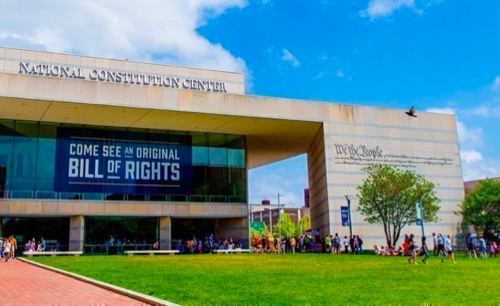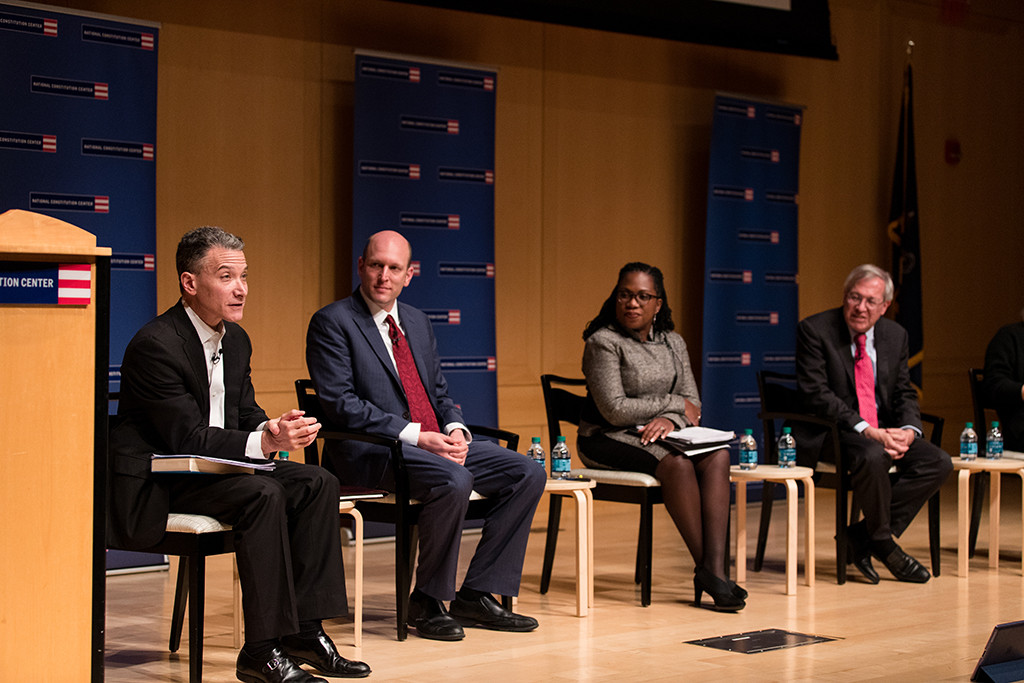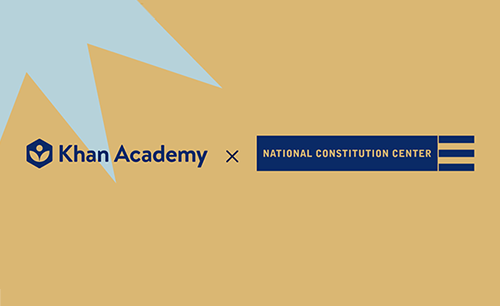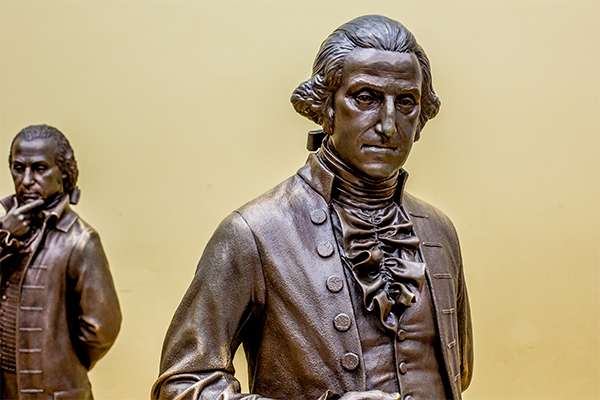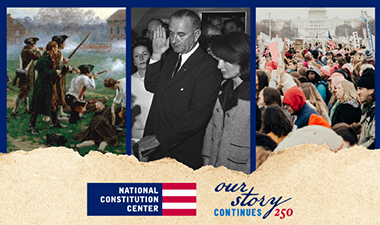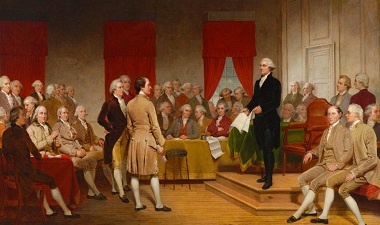Through remarkable artifacts and rare documents, the 3,000-square-foot exhibit brings to life the stories of Frederick Douglass, Abraham Lincoln, Harriet Tubman, as well as lesser-known individuals central to the conflict over slavery. Explore what life was like for those who fought for freedom both on the battlefield and by the pen, and learn about the addition of three constitutional amendments that ended slavery, required states to respect individual rights, promised equal protection to all people, and expanded the right to vote to Black men.
Civil War and Reconstruction: The Battle for Freedom and Equality
Explore how constitutional clashes over slavery set the stage for the Civil War and how its outcome transformed the Constitution to more fully embrace the Declaration of Independence’s promise of liberty and equality.
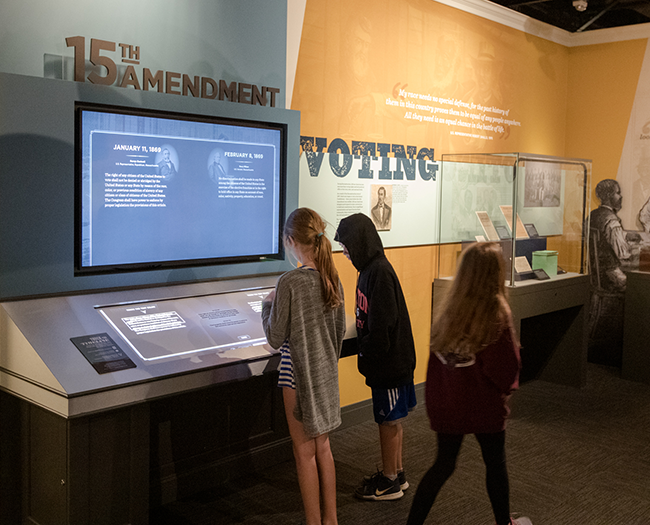
This exhibit sheds light on the American experience under slavery, the battle for freedom during the Civil War, and the fight for equality during Reconstruction, which many call the nation’s “Second Founding.”
Explore the Exhibit
Check out highlights from the gallery. Please note, artifacts are rotated and subject to change.
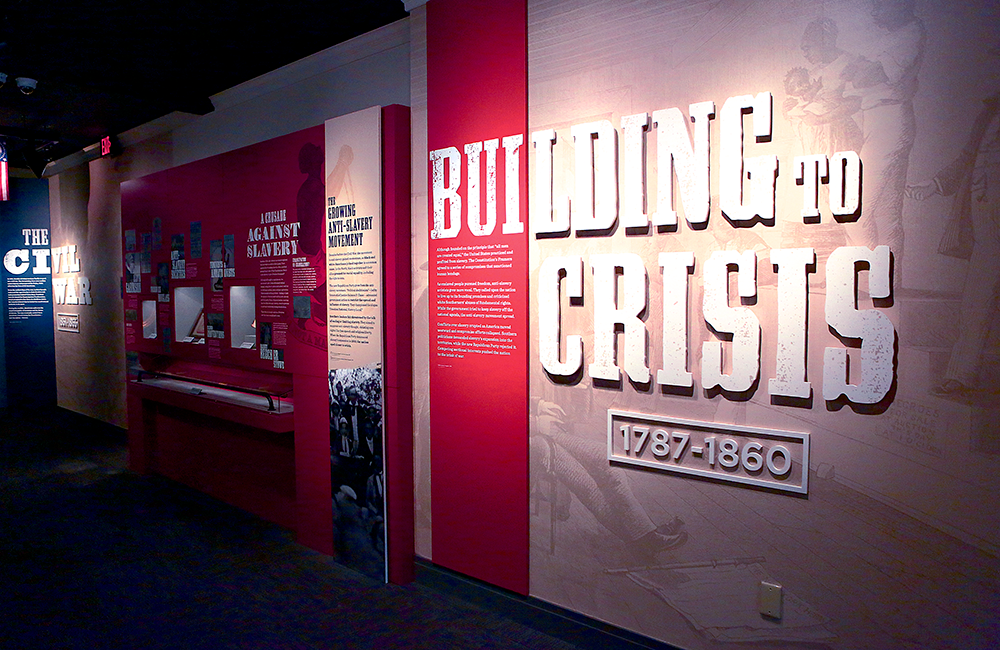
Building to CrisisPhoto courtesy of the National Constitution Center
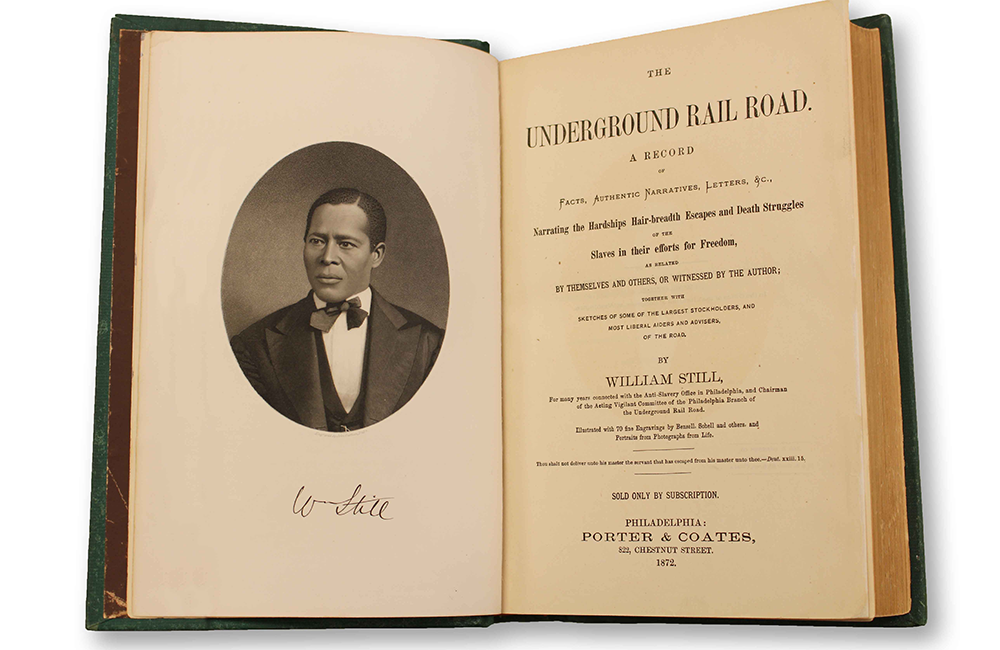
The Underground Railroad by William StillCourtesy of The Civil War Museum of Philadelphia and The Union League Legacy Foundation
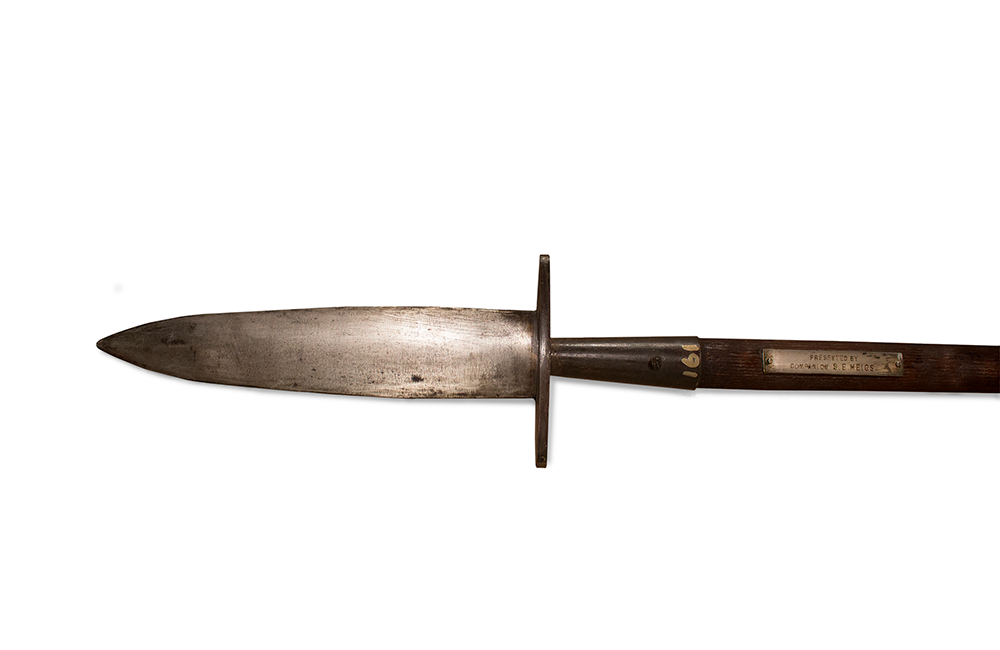
Pike purchased by John Brown for the Harpers Ferry Raid, 1857From the Collection of the Civil War Museum of Philadelphia on loan from Gettysburg Foundation
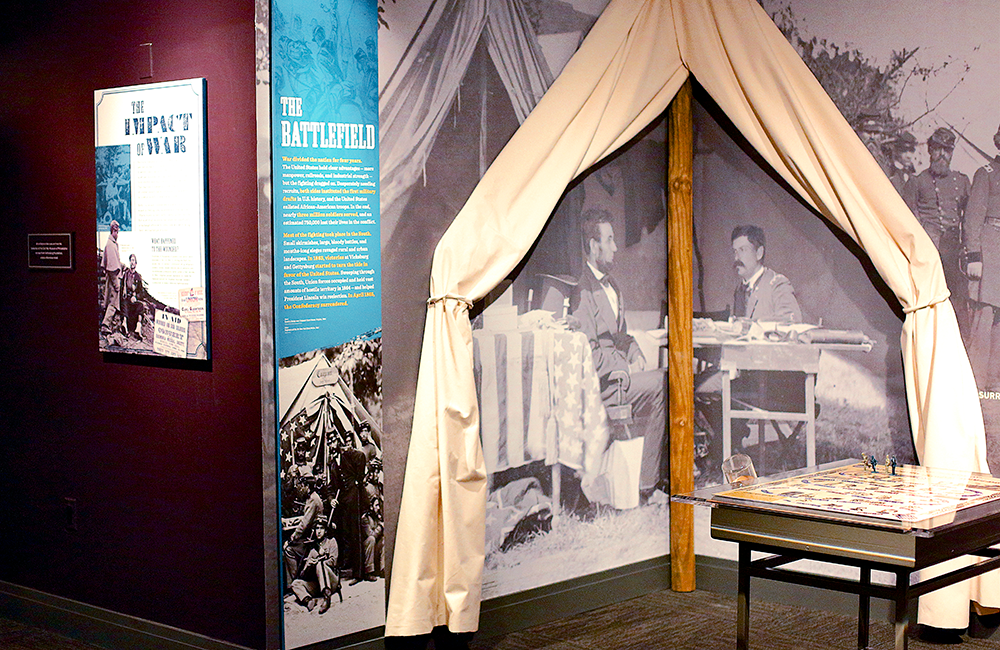
The Civil WarPhoto courtesy of the National Constitution Center
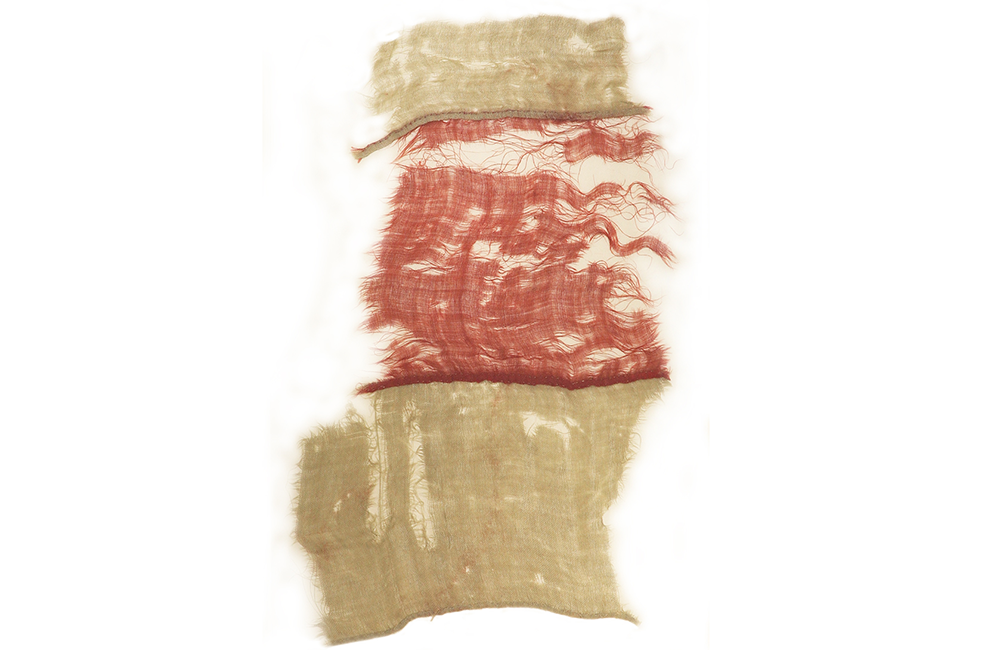
Fragment of the American flag that Lincoln raised at Independence Hall, 1861From the Collection of the Civil War Museum of Philadelphia on loan from Gettysburg Foundation
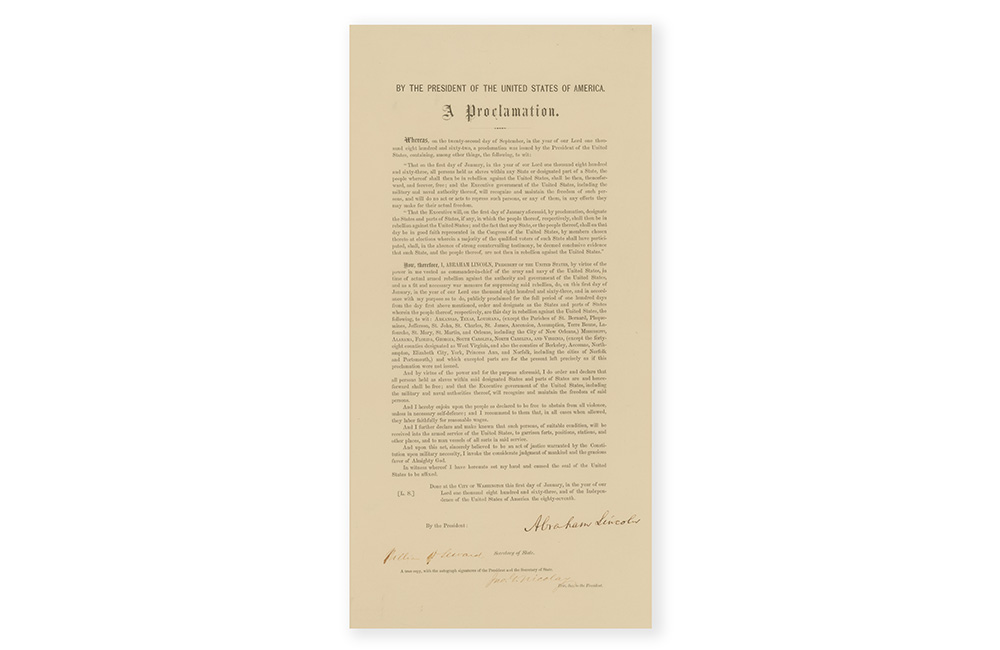
Commemorative copy of the Emancipation Proclamation signed by President Lincoln, 1864Courtesy of Founding Forward
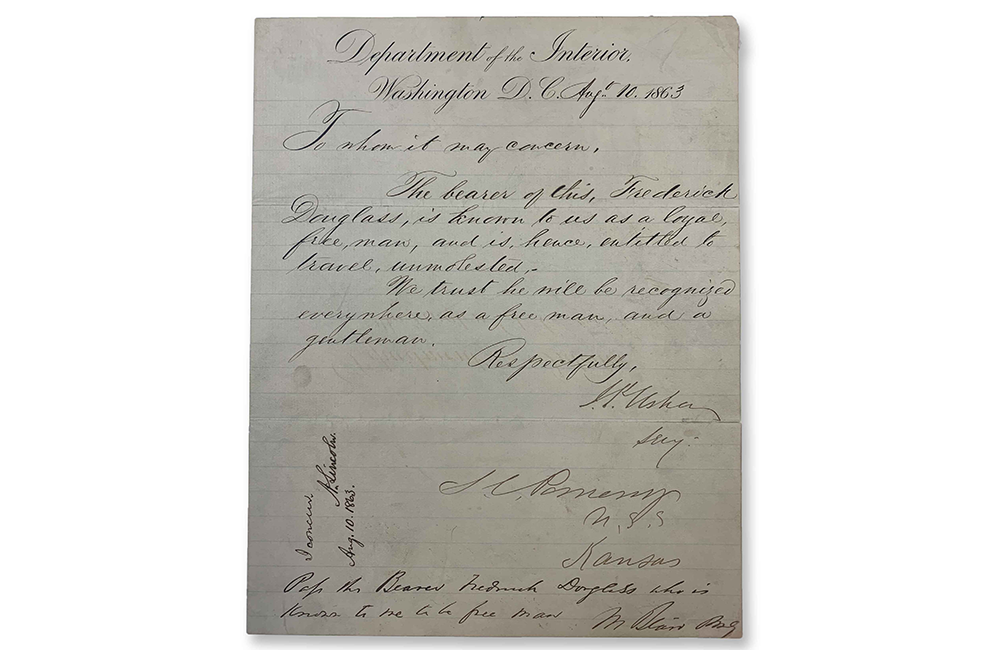
Pass carried by Frederick Douglass to recruit Black troops, 1863National Park Service, Frederick Douglass National Historic Site
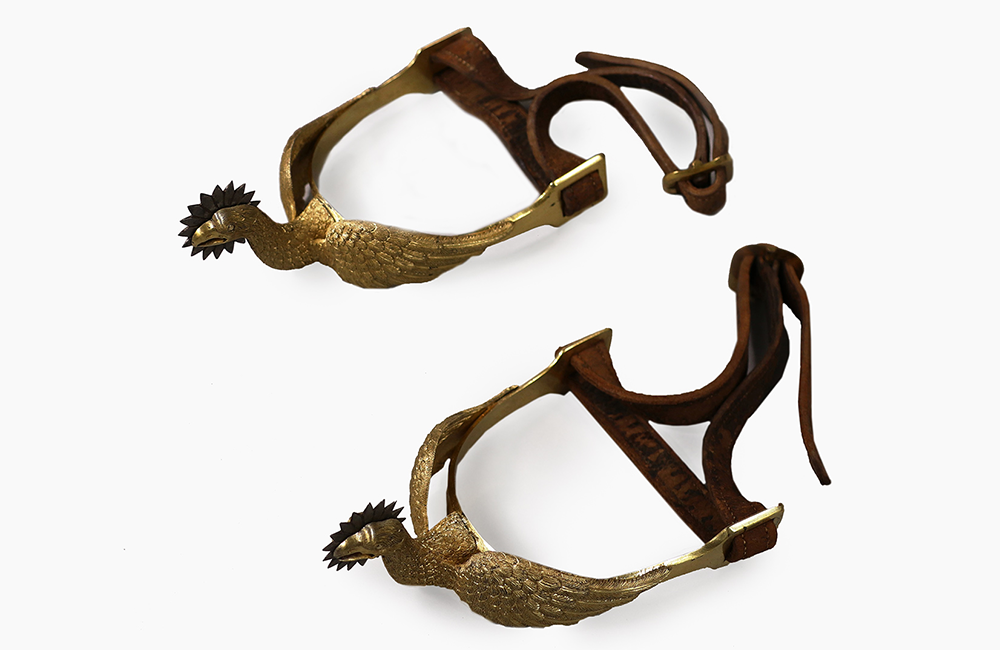
Dress spurs worn by Major General George MeadeFrom the Collection of the Civil War Museum of Philadelphia on loan from Gettysburg Foundation
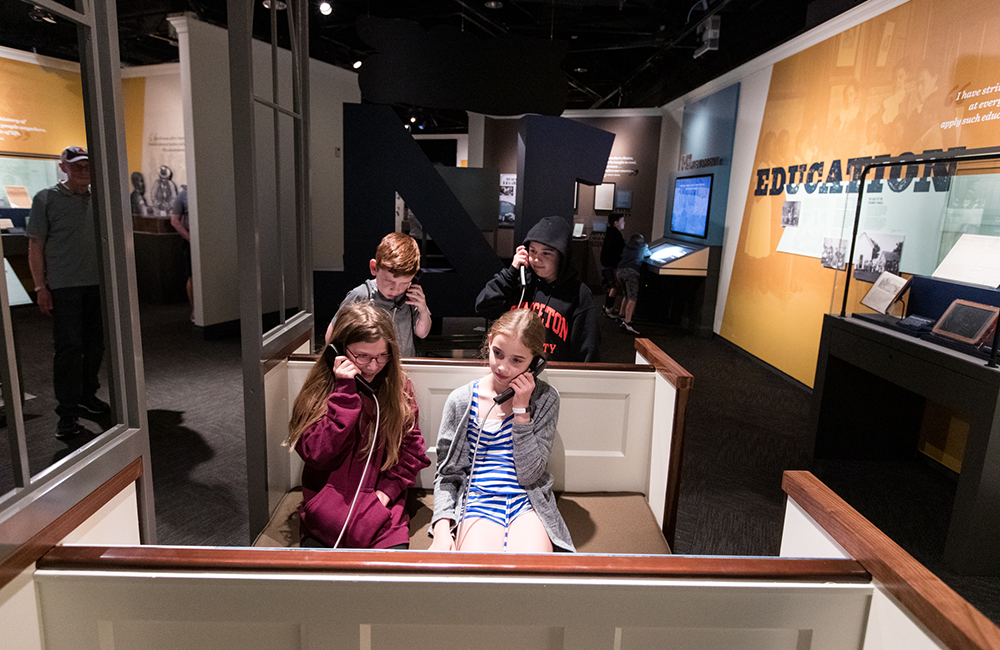
ReconstructionPhoto courtesy of the National Constitution Center
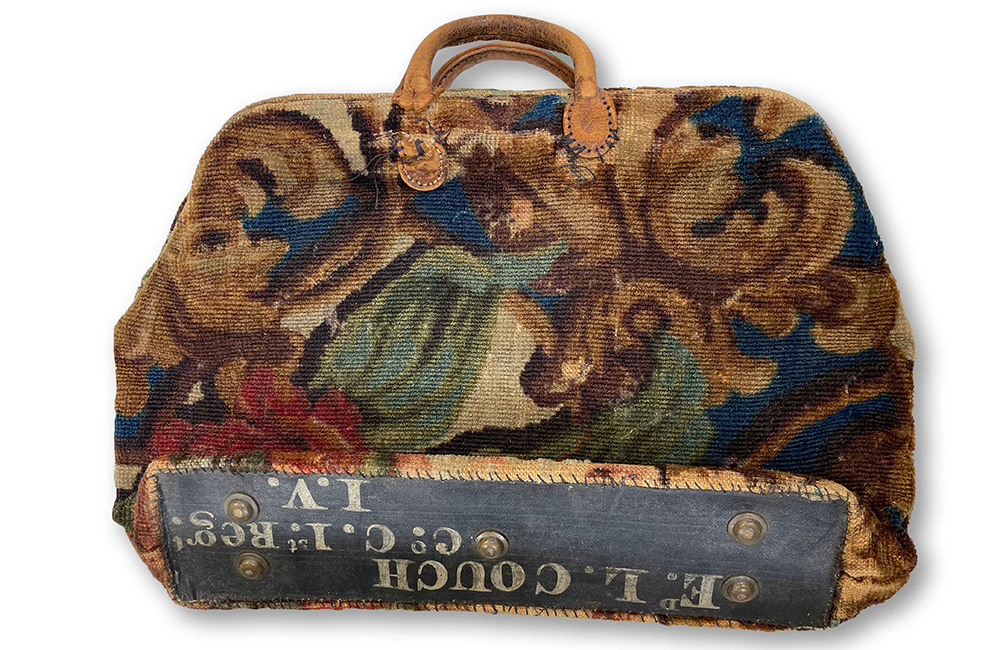
Carpetbag luggage, ca. 1800sCourtesy of Angelo Scarlato
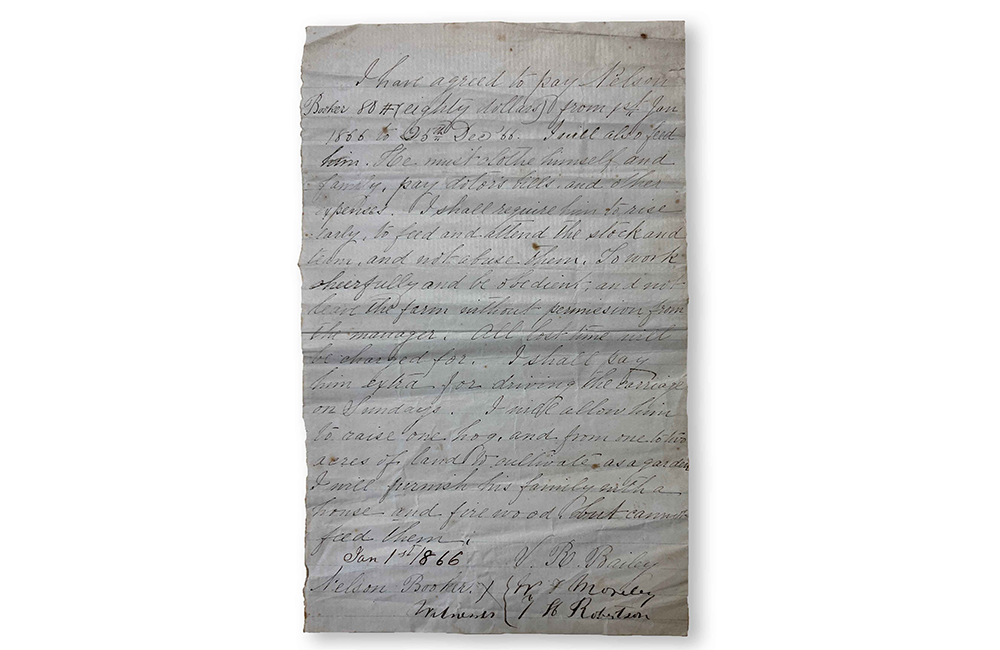
Freed person's labor contract from the Reconstruction eraFrank Amari, Jr.
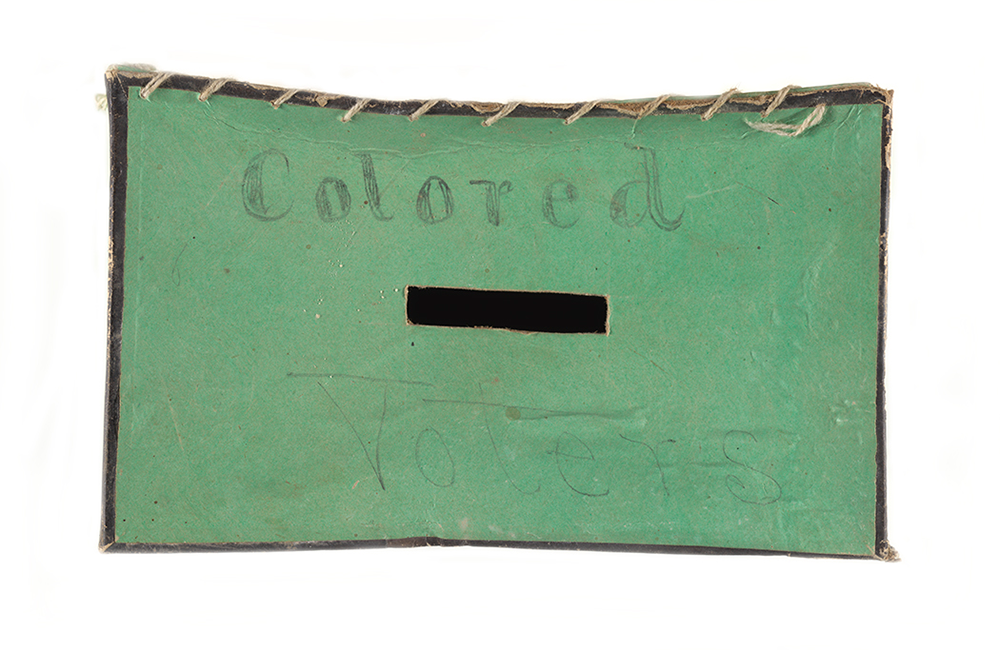
“Colored” ballot box from Virginia’s first election permitting African Americans to vote, 1867Courtesy of the Library of Virginia
Exhibit Interactives
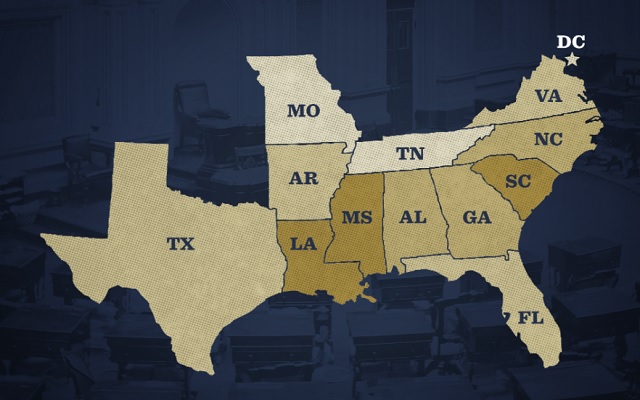
Officeholders By the Numbers
Discover the stories of African American men who held political office during Reconstruction.
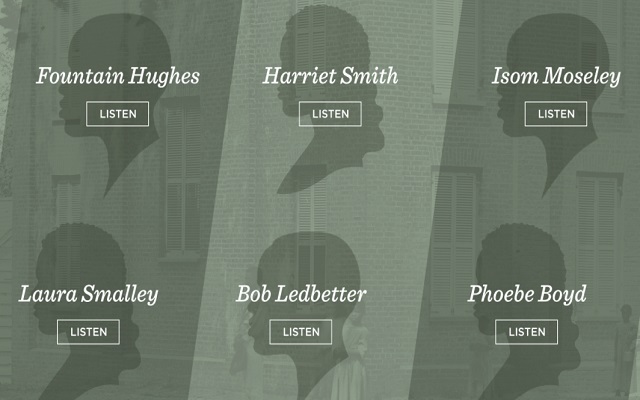
In Their Own Words
Listen to recollections of slavery and freedom from formerly enslaved individuals.
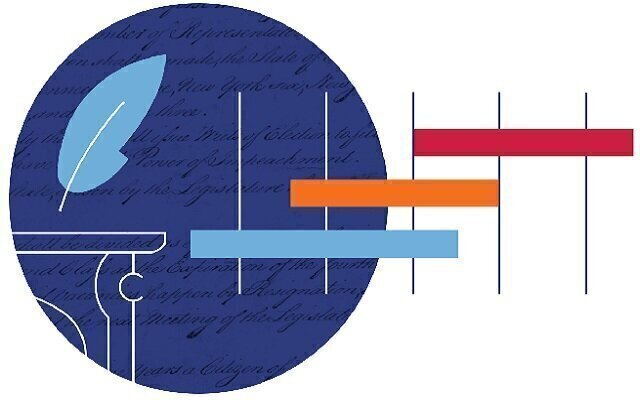
The Drafting Table
Learn how the provisions of the 13th, 14th, and 15th Amendments changed during the drafting process.
Virtual Tour
Explore the Exhibit From Home
Join National Constitution Center President and CEO Jeffrey Rosen and Exhibition Developer Elena Popchock on a video tour to learn about this critical period in American history. Virtual tour made possible by generous support from George S. Blumenthal. Photography by Ardon Bar-Hama.
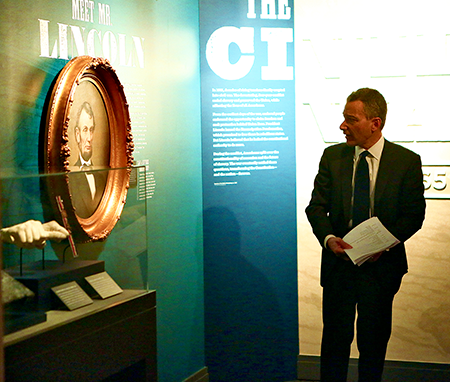
Partners and Support
Civil War and Reconstruction: The Battle for Freedom and Equality is made possible thanks to a partnership among:
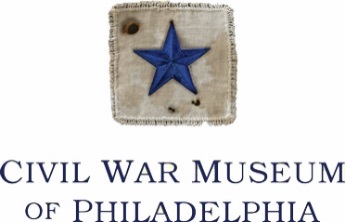


This exhibit gallery is made possible thanks to the generous support of:
Horace W. Goldsmith Foundation
The George Family Foundation
The Pew Charitable Trusts | William Penn Foundation
PECO | Crystal Trust | The McLean Contributionship
Otto Haas Charitable Trust, at the recommendation of John and Janet Haas
Board of Governors of the Civil War Museum of Philadelphia
Commonwealth of Pennsylvania Tourism Office
Pennsylvania Department of Community and Economic Development
Redevelopment Assistance Capital Program of the Commonwealth
Reconstruction and the 14th Amendment theater programs, including the in-gallery performance, The Great Problem to be Solved, and FOURTEEN: A Theatrical Performance, are supported by:
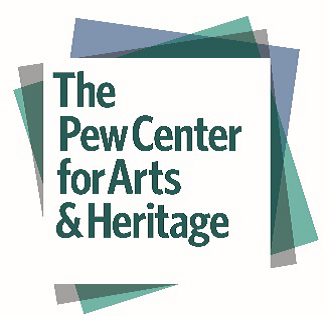
Special thanks to Kurt Lash from the University of Richmond School of Law for generously sharing his research and offering his expertise to produce the original gallery interactive created to teach the drafting process of each Reconstruction Amendments’ text.
Kurt Lash, The Reconstruction Amendments: Essential Documents (University of Chicago Press, 2019).
About the Civil War Museum of Philadelphia
The Civil War Museum of Philadelphia was chartered in 1888, but the museum’s history and its collection had their beginnings as the Civil War ended in 1865. The Civil War Museum of Philadelphia’s collection is one of the most significant of Civil War relics in the country. Comprising some 3,000 artifacts, several thousand photographs, hundreds of works of art, scores of maps and charts, and nearly 100 linear feet of letters, diaries, muster rolls, and other archival materials, the collections of the Civil War Museum of Philadelphia rank among the largest and most comprehensive in the United States. More than 80 percent of the materials came to the museum directly from Civil War veterans or their descendants. Since 2010 the collection has been cared for by the Gettysburg Foundation and stored at the Gettysburg National Military Park Museum and Visitor Center.
About the Gettysburg Foundation
The Gettysburg Foundation is a non-profit educational organization working in partnership with the National Park Service to enhance preservation and understanding of the heritage and lasting significance of Gettysburg. The Foundation raised funds for and now operates the Museum and Visitor Center at Gettysburg National Military Park, which opened in April 2008. In addition to operating the Museum and Visitor Center, the Foundation has a broad preservation mission that includes land, monument and artifact preservation and battlefield rehabilitation—all in support of the National Park Service’s goals at Gettysburg.
Explore more about the Civil War and Reconstruction
Charles Sumner: Conscience of a Nation
The life and constitutional legacy of Senator Charles Sumner
Born Equal: America’s Founding Promise and the Fight for Equality
Constitutional scholar Akhil Reed Amar discusses his new book Born Equal: Remaking America’s Constitution, 1840-1920, which explores the transformative amendments that redefined freedom, equality, and voting rights in the post-Civil War era.
Newly proposed constitutional amendments face steep challenges
Recently, a member of the House of Representatives proposed changing the Constitution to allow current President Donald Trump the option of running for a third term as president. Constitutional amendment proposals are common during congressional terms, but few ever make it to the states as proposed amendments.
FOURTEEN
Created in conjunction with the exhibit, FOURTEEN was a theatrical performance that shed light on the Reconstruction era and the ratification of the 14th Amendment. Through dramatic interpretation of original texts, such as Frederick Douglass’s open letter “To My Old Master,” the performance brought to life the leaders, influential figures, and everyday Americans who were central to the era.
